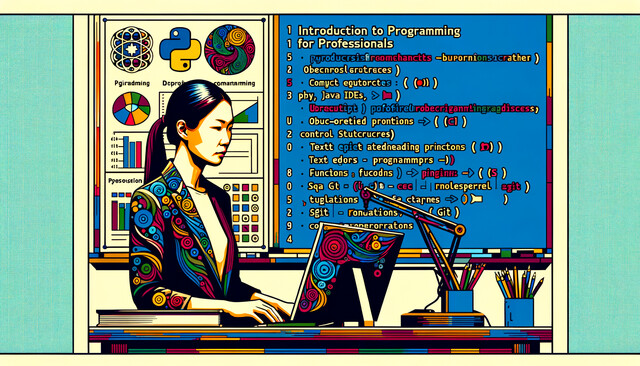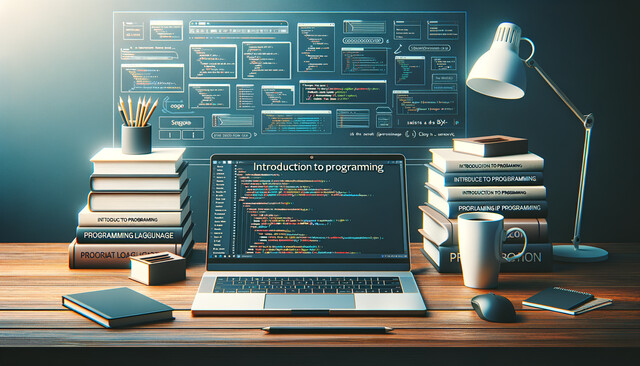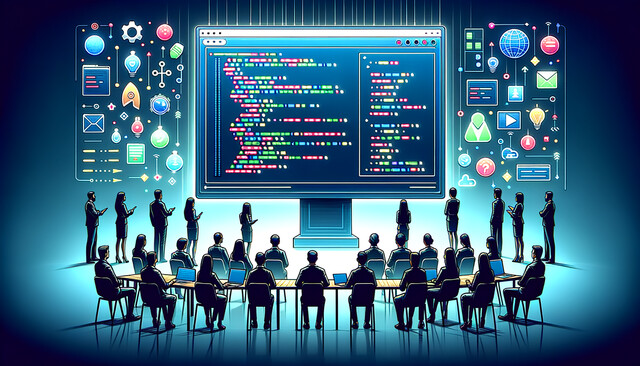Introduction to Programming for Professionals
Code Smarter, Innovate Faster: Empower Your Future Today

5 Hours average completion time
0.5 CEUs
15 Lessons
22 Exams & Assignments
15 Reference Files
Mobile Friendly
Last Updated January 2025
In a world where digital mastery is paramount, where the ability to harness technology can turn ideas into innovations, "Introduction to Programming for Professionals" stands as a beacon of opportunity. As technology evolves at an unprecedented pace, professionals across every industry are realizing the incredible advantage of understanding the language of code. Whether you're looking to pivot in your career, enhance your current professional toolkit, or simply indulge an unyielding curiosity, this course isn't just another line item on your to-do list--it's the key that unlocks the door to your future success.
Imagine walking into a room of technology experts and speaking their language fluently, confidently navigating the conversations that were previously outside your grasp. Picture yourself being able to conceptualize solutions with the agility of a seasoned developer, your newfound skills bridging the gap between complex ideas and seamless execution. This course is your path to growing beyond limitations, enabling you to articulate and realize your visions in ways you've only dreamed about.
Built with the professional in mind, "Introduction to Programming for Professionals" is more than a series of lessons--it's a journey of transformation. From the first moment, you're not just thrown into the technical depths; instead, you're accompanied on a narrative that guides you through the intricacies of modern programming. You'll begin with understanding the fundamental underpinnings of various programming languages, transforming those abstract concepts into meaningful, real-world applications. Our approach ensures that you don't just learn syntax and semantics, but that you truly grasp the heart and soul of programming languages, allowing you to apply them creatively and effectively.
This adventure doesn't stop at understanding the technical aspects; it's about the environment you thrive in. You'll decode the complexities of your coding environment, mastering the tools that professionals swear by, enabling faster, more efficient output. Beyond the mere act of writing code, you will learn to sculpt it, leveraging the power of functions and objects in ways that make your work stand out.
Control structures will no longer be just abstract notions--they will become your allies in devising sophisticated algorithms that you can apply immediately. As you learn, you will gain mastery over variables and data types, energizing your projects with dynamic, adaptable coding practices that lead to innovation and problem-solving excellence.
The journey continues into realms of powerful, practical knowledge in Object-Oriented Programming (OOP), where you're equipped to handle complex systems like never before. You'll walk away prepared to mold your code into objects that reflect real-world entities, ready to tackle challenges in AI, software development, and beyond with the confidence of a seasoned professional.
What sets this course apart is its commitment to not just fill your mind with information, but to inspire a real shift in how you see and interact with technology. From error-handling finesse to mastering data integrity, these teachings are designed to cultivate a mindset of innovation and resilience. You'll gain the strategies for harnessing SQL for strategic data operations, ensuring that your projects thrive in this data-driven era.
Finally, we believe that collaboration is key. You will dive into tools like Git and APIs which turn the solitary act of programming into a powerful collective endeavor, enhancing your capacity to contribute meaningfully in any team or project. And because we recognize the importance of lasting knowledge, you'll learn the craft of documentation, an essential skill for ensuring your work influences future generations of developers.
Ultimately, "Introduction to Programming for Professionals" promises a unique, engaging experience that is as enlightening as it is empowering. It's more than education; it's the development of a new professional superpower. When you're ready to take control of your future and elevate your career to extraordinary heights, this is your course. Start your journey with us today, and let's translate your aspirations into achievements.
Choose from plans starting at just $16/month (billed annually)
See Your Team Succeed
Empower your team instantly with an integrative group enrollment system. Purchase licenses in bulk with Group Discounts.










































